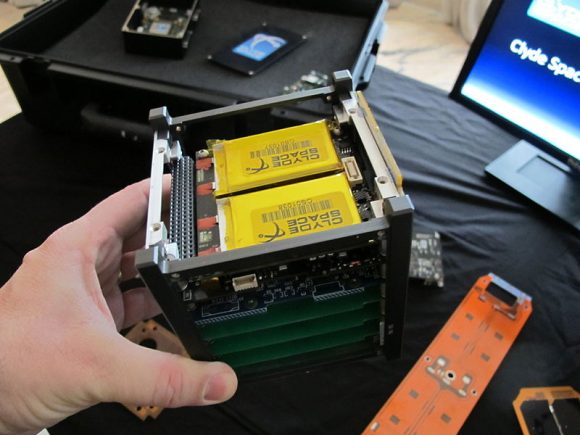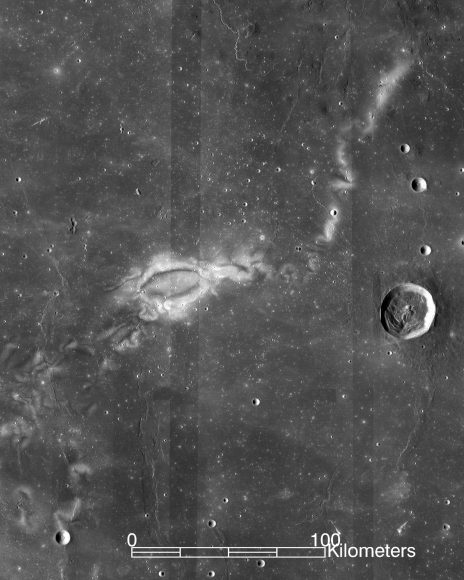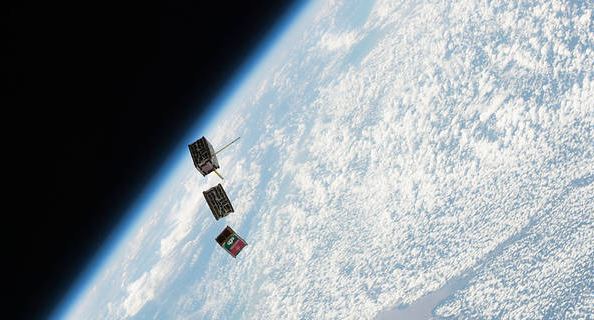We’re accustomed to the ‘large craft’ approach to exploring our Solar System. Probes like the Voyagers, the Mariners, and the Pioneers have written their place in the history of space exploration. Missions like Cassini and Juno are carrying on that work. But advances in technology mean that Nanosats and Cubesats might write the next chapter in the exploration of our Solar System.
Nanosats and Cubesats are different than the probes of the past. They’re much smaller and cheaper, and they offer some flexibility in our approach to exploring the Solar System. A Nanosat is defined as a satellite with a mass between 1 and 10 kg. A CubeSat is made up of multiple cubes of roughly 10cm³ (10cm x 10cm x 11.35cm). Together, they hold the promise of rapidly expanding our understanding of the Solar System in a much more flexible way.

NASA has been working on smaller satellites for a few years, and the work is starting to bear some serious fruit. A group of scientists at JPL predicts that by 2020 there will be 10 deep space CubeSats exploring our Solar System, and by 2030 there will be 100 of them. NASA, as usual, is developing NanoSat and CubeSat technologies, but so are private companies like Scotland’s Clyde Space.
Clyde Space from Clyde Space on Vimeo.
INSPIRE and MarCO
NASA has built 2 Interplanetary NanoSpacecraft Pathfinder In Relevant Environment (INSPIRE) CubeSats to be launched in 2017. They will demonstrate what NASA calls the “revolutionary capability of deep space CubeSats.” They’ll be placed in earth-escape orbit to show that they can withstand the rigors of space, and can operate, navigate, and communicate effectively.
Following in INSPIRE’s footsteps will be the Mars Cube One (MarCO) CubeSats. MarCO will demonstrate one of the most attractive aspects of CubeSats and NanoSats: their ability to hitch a ride with larger missions and to augment the capabilities of those missions.
In 2018, NASA plans to send a stationary lander to Mars, called Interior Exploration using Seismic Investigations, Geodesy and Heat Transport (InSight). The MarCO CubeSats will be along for the ride, and will act as communications relays, though they aren’t needed for mission success. They will be the first CubeSats to be sent into deep space.
So what are some specific targets for this new class of small probes? The applications for NanoSats and CubeSats are abundant.
Other NanoSat and CubeSat Missions
NASA’s Europa Clipper Mission, planned for the 2020’s, will likely have CubeSats along for the ride as it scrutinizes Europa for conditions favorable for life. NASA has contracted 10 academic institutes to study CubeSats that would allow the mission to get closer to Europa’s frozen surface.
The ESA’s AIM asteroid probe will launch in 2020 to study a binary asteroid system called the Didymos system. AIM will consist of the main spacecraft, a small lander, and at least two CubeSats. The CubeSats will act as part of a deep space communications network.

The challenging environment of Venus is also another world where CubeSats and NanoSats can play a prominent role. Many missions make use of a gravity assist from Venus as they head to their main objective. The small size of NanoSats means that one or more of them could be released at Venus. The thick atmosphere at Venus gives us a chance to demonstrate aerocapture and to place NanoSats in orbit around our neighbor planet. These NanoSats could take study the Venusian atmosphere and send the results back to Earth.
NanoSWARM
But the proposed NanoSWARM might be the most effective demonstration of the power of NanoSats yet. The NanoSWARM mission would have a fleet of small satellites sent to the Moon with a specific set of objectives. Unlike other missions, where NanoSats and CubeSats would be part of a mission centered around larger payloads, NanoSWARM would be only small satellites.
NanoSWARM is a forward thinking mission that is so far only a concept. It would be a fleet of CubeSats orbiting the Moon and addressing questions around planetary magnetism, surface water on airless bodies, space weathering, and the physics of small-scale magnetospheres. NanoSWARM would target features on the Moon called “swirls“, which are high-albedo features correlated with strong magnetic fields and low surficial water. NanoSWARM CubeSats will make the first near-surface measurements of solar wind flux and magnetic fields at swirls.

Credits: NASA LRO WAC science team
NanoSWARM would have a mission architecture referred to as “mother with many children.” The mother ship would release two sets of CubeSats. One set would be released with impact trajectories and would gather data on magnetism and proton fluxes right up until impact. A second set would orbit the Moon to measure neutron fluxes. NanoSWARM’s results would tell us a lot about the geophysics, volatile distribution, and plasma physics of other bodies, including terrestrial planets and asteroids.
Space enthusiasts know that the Voyager probes had less computing power than our mobile phones. It’s common knowledge that our electronics are getting smaller and smaller. We’re also getting better at all the other technologies necessary for CubeSats and NanoSats, like batteries, solar arrays, and electrospray thrusters. As this trend continues, expect nanosatellites and cubesats to play a larger and more prominent role in space exploration.
And get ready for the NanoSTORM.


Maybe they’ll shrink enough to solve the space junk problem. But as of now, it seems like it’s gonna get much worse soon… Who’s going to be tracking hundreds and thousands of small sats and see if they’re on a collision course with each other or with other bigger sats?
P.S: a cube of 10cm x 10cm x 10cm is not 10cm3 but 1000cm3 or 1dm3